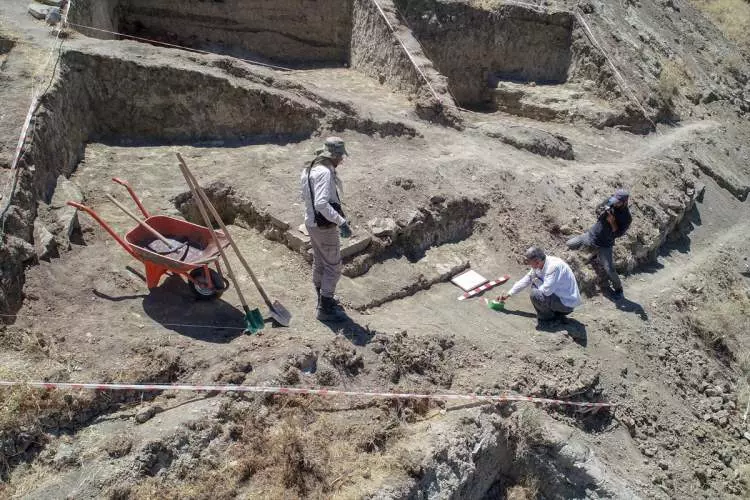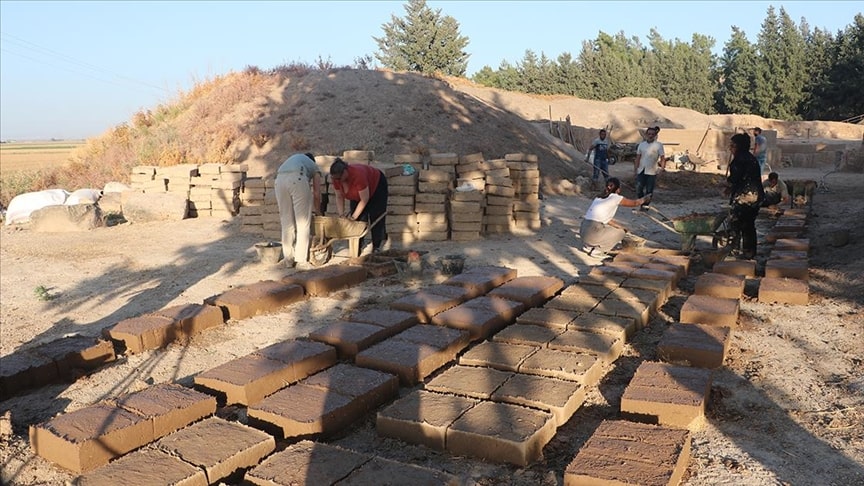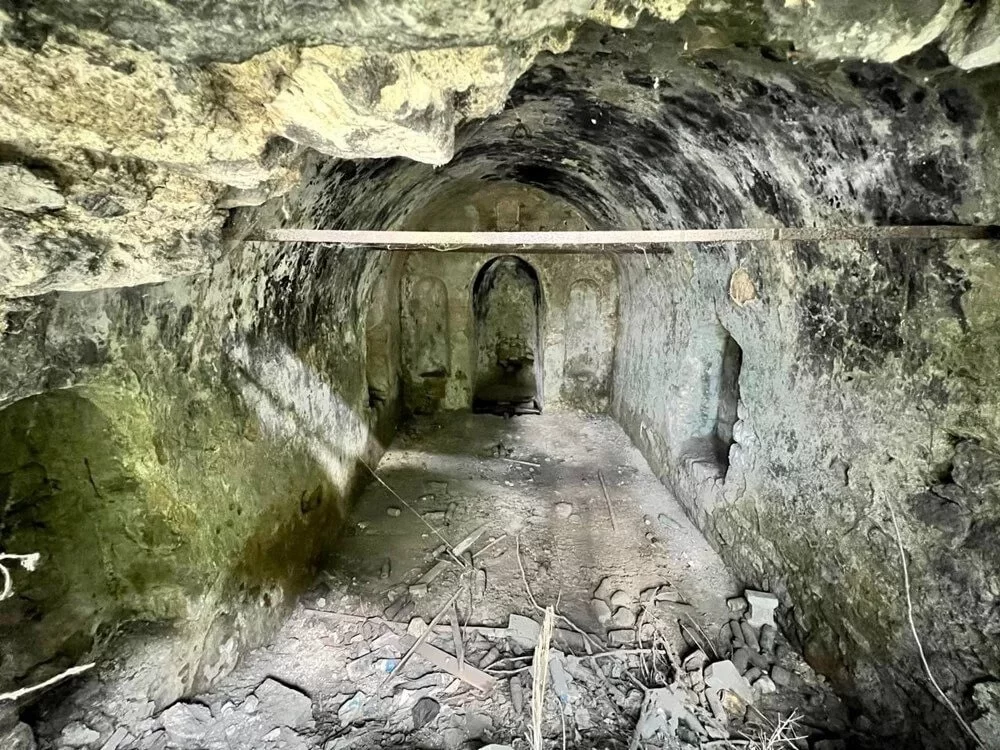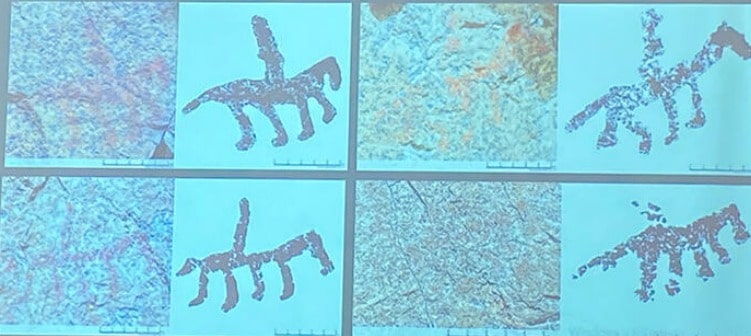
The traces of settlement are being reached in the excavations at Karahantepe
Karahantepe archaeological site excavations provide new information about the ancient past and human settlement patterns. The site is known for its stratified layers of occupation that span a wide range of historical periods, including the Neolithic, Chalcolithic, and Early Bronze Ages. These layers reveal a complex history of human habitation and cultural evolution. The works

Archaeologists are tracing the footsteps of a 200,000-year-old history in a Gurs Valley’s cave
In a cave located 20 km west of the southeastern Turkish province of Mardin, in the Gurs Valley, traces of a 200,000-year-old history of humanity are being sought. Gurs Valley is home to historical castles, mansions, mausoleums, mosques, caravanserais, and church ruins from the Late Roman, Early Byzantine, Seljuk, and Ottoman periods, as well as

Medieval bones found in Kortik Tepe excavations shed light on the human anatomy of the period
The analysis results of the Middle Ages bones unearthed 16 years ago at Kortik Tepe Höyük, located in the southeastern part of Turkey, have been published. The experts examined the jawbones of 121 individuals (55 females and 66 males) who lived during the Middle Ages near Kortik Tepe Höyük. The experts analyzing the bones found

Urartians used terracing method to protect against the destructive force of earthquakes
During the excavation works carried out at Çavuştepe Castle, which was built by King Sarduri II of Urartu in 750 BC, along with the necropolis area to the north, it was observed that the Urartians used terracing method to mitigate the destructive effects of earthquakes. The Kingdom of Urartu ruled over a vast geographical area

Aççana mound, which hosts the Mushki Kingdom affected by the Kahramanmaraş Earthquake, is being restored using traditional methods
Aççana mound, hosts to the Mushki Kingdom, which was severely damaged by two major earthquakes in Kahramanmaraş in February, is being restored with traditional methods. The operations at the mound, whose remains are dated back to 3,500 years ago, are being conducted by a 25-member team led by Assoc. Prof. Dr. Murat Akar, the head

An unknown chapel discovered in Istanbul
A mysterious chapel was discovered underground in Bağcılar district of Istanbul. From a distance, the structure, resembling a passage, has a school on top of it. NTV reporter Sinan Kunter said that Archaeologist Ömer Faruk Yavaşçay, who answered his questions, stated that he noticed the historical structure while conducting research on city maps. Archaeologist Yavaşçay

3,000-year-old rock rare paintings have discovered in Rize
Archaeologists have discovered approximately 3,000-year-old rock paintings believed to belong to the Bozkurt tribes during their surface survey. The discovery happened in the İkizdere district of Rize province, Turkey. Associate Professor Dr. Okay Pekşen, Head of the Ancient History Department at Ondokuz Mayıs University, stated, “We saw approximately 3,000-year-old rock paintings believed to belong to

The largest synagogue of the ancient world, located in the ancient city of Sardis, is being restored
The ancient world’s largest synagogue, unearthed in the ancient city of Sardis, the capital of the Lydia Kingdom where the first coin was minted under state guarantee, is undergoing restoration. The Lydia Kingdom was a kingdom that existed in the western region of Anatolia approximately between 1200 BC and 546 BC. Excavations have been ongoing

